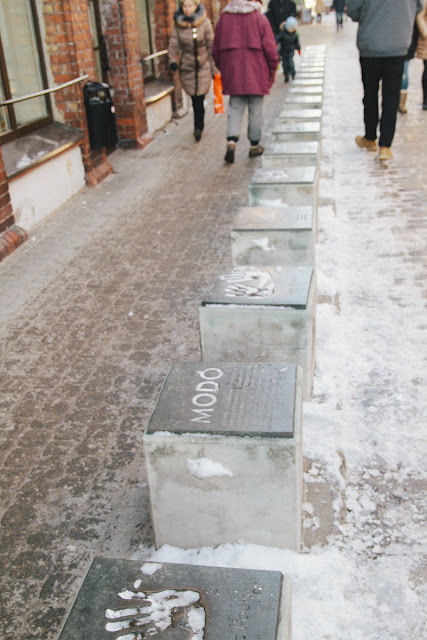Depois do primeiro dia de visita a Karosta continuamos em Liepāja. Estivémos a conhecer o centro da cidade com a Paulina e também com o Zigimants, marido da Liga. O Zigimants queria retomar as free walking tours em Liepāja eu e a Isabel fomos as "cobaias" para a nova versão. Passeámos pela cidade durante duas horas e ouvimos o nosso guia a falar da história da cidade e dos locais importantes. Seria impossível saber tantos detalhes sem a ajuda de um local tão interessado na sua cidade, fez toda a diferença! Também tivemos oportunidade de visitar a igreja da Santíssima Trindade, onde está alojado um dos maiores orgãos europeus. Por sorte assistímos de perto a um guia tocar este orgão e pudemos ouvir o som grandioso que dele emana. Para quem visitar Liepāja a passagem pelo museu da cidade é uma boa oportunidade de conhecer melhor a região e a história da cidade.
Depois de conhecer as ruas, o mar e os parques da cidade entrámos na nova sala de concertos para orquestra da cidade. Em homenagem à fama do ambar em Liepāja, a fachada do edifício é composta por vidros com cor de ambar e a vista do interior é algo fora do comum. No final do dia fomos ver um jogo de basket com comentário musical ao vivo, algo que nunca tinha assistido e que foi muito divertido.
Além de estarmos com a Paulina, estivemos ainda com mais dois voluntários que estão em Liepāja, o Alexandru e o Manuel. Estivemos em casa deles a cozinhar todos juntos e a jogar jogos de tabuleiro. Estes voluntários trabalham no centro jovem da cidade, onde também estivémos a beber um chá (que no inverno é absolutamente essencial) e a jogar um jogo tradicional Letão.
Liepāja é a cidade do vento, do ambar e do rock. É uma cidade distinta de todas as outras cidades Letãs e com uma personalidade muito forte.
After the first day visiting Karosta we continued in Liepāja. We went to visit the city center with Paulina and also with the Zigimants, Liga's husband. Zigimants wanted to resume his free walking tours in Liepāja and me and Isabel were the "guinea pigs" to the new version. We walked around the city for two hours and listened to our guide talk about the city's history and important places. It would be impossible to know as many details without the help of a local so interested in his city, it made all the difference! We also had the opportunity to visit the Holy Trinity church, where is housed one of the largest European organs. Luckily we watched closely to a guide playing this organ and listen the great sound that emanates from it. For those who visit Liepāja passing through the city museum is a good opportunity to get to know the region and the city's history.
Once we knew the streets, the sea and the city parks we entered the new concert hall for the orchestra of the city. In homage to amber's fame in the city, the building's facade consists of glass with ambar color and the view from inside is something out of the ordinary. Finally we went to see a basketball game with live musical comment, something I had never seen and was really fun.
In addition to being with Paulina we also were with two volunteers who are in Liepāja, Alexandru and Manuel. We were in their house cooking together and playing board games. These volunteers work in the youth center, where we also were sipping a tea (which in winter is absolutely essential) and playing a traditional latvian game.
Liepāja is the city of wind, amber and rock. It is very different than other Latvian cities and with a very strong personality.




















































